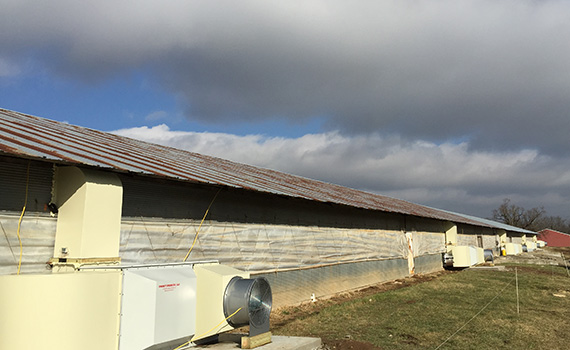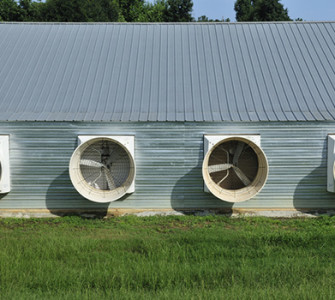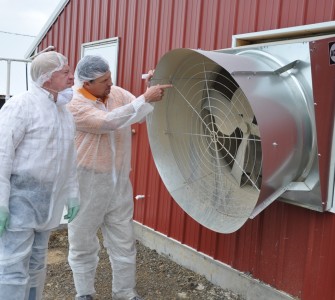Waste-heat recovery system could save millions annually while improving air quality
A team of researchers and engineers from the University of Missouri has developed a waste-heat recovery system that could lead to significant savings in propane costs for producers heating their poultry barns.
Scientists believe the energy-efficient ventilation system also could be critical to maintaining air quality for birds and keeping the birds healthier while reducing the need for antibiotics.
“Chickens and turkeys need a constant, moderate temperature to thrive — even in warmer spring and summer weather,” said Yun-sheng “Shawn” Xu, an associate research professor of civil and environmental engineering in the University of Missouri College of Engineering.
“Our goal is to reduce propane consumption in poultry farms by 60-70% of current levels, so producers can fill their propane tanks only once a year — and if they can get them filled in warmer weather, when propane prices are even lower, there’s a considerable savings. If fully implemented nationwide, this could equate to hundreds of millions saved each and every year.”
According to a report by Heartland Farm Energy, a contract broiler grower facility in Missouri installed waste-heat recovery units in two of their four barns. Twelve propane gas meters were installed in all four barns and daily propane consumption was recorded. Over 2 years of operation, propane saving in the range of 45-50% were achieved based on weather and other operating conditions.
Xu devised the waste-heat recovery system that works with the air ventilated from poultry barns. The warm air that is normally exhausted as waste is pushed through a grid of tubing located in the fresh-air ventilation inlets. As the air exchange is made, the heat from the exhaust warms the fresh incoming air reducing the amount of energy needed to heat the the buildings.
“The system allows for an even distribution of cleaner and warmer air, which has eliminated cold, wet spots in the barn,” Xu said. “The system also helps reduce dust and ammonia levels, which helps reduce respiratory problems for the birds making them more resistant to avian diseases.”
Waste-heat recovery systems have been installed in turkey, broiler and egg layer barns in Missouri and Minnesota. Xu and his colleague Jeff Firman, a professor of animal science in the University of Missouri College of Agriculture, Food and Natural Resources, have noticed significant improvements to poultry production that could help farmers. Impacts could include lower labor costs, environmental improvements and reduction of disease among chickens.
Nearly 100,000 poultry barns exist in the US and total farm value of poultry production exceeds $20 billion a year, based on statistics by USDA.
Xu has produced more than 48 of the units and has 100 more in production. USDA has granted Xu and his team more than $360,000 to further test and develop the technology with other grants from USDA pending. Xu recently presented his findings at the Missouri Poultry Federation’s annual conference.
Posted on September 9, 2015

















